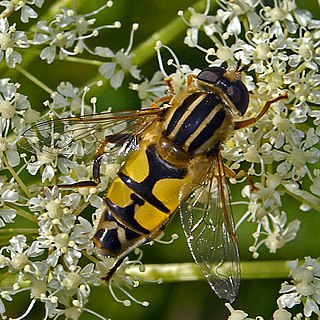
Helophilus trivittatus is a species of Palearctic hoverfly.

Leucozona glaucia, the Pale-saddled Leucozona is a Palearctic hoverfly. Larvae feed on ground layer aphids. Adults are usually seen visiting flowers.

Platycheirus clypeatus is a species of hoverfly. It is found across the Palearctic and in the Nearctic. The larvae feed on aphids. Adults are usually found on the edges of woodland or scrub, heath or along hedgerows where they visit a wide range of flowers.

Eupeodes luniger is a common species of hoverfly.
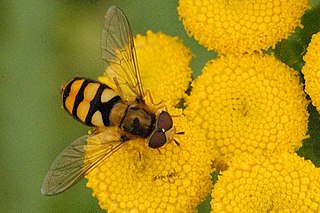
Eupeodes latifasciatus is a species of hoverfly. Adults feed on nectar; larvae feed on aphids and scale insects.

Dasysyrphus venustus is a Holarctic species of hoverfly.

Platycheirus peltatus is a Palearctic species of hoverfly.

Leucozona laternaria is a European species of hoverfly.
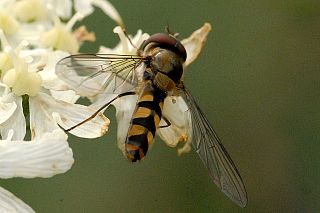
Meliscaeva auricollis is a West Palearctic species of hoverfly.

Meliscaeva cinctella is a Holarctic species of hoverfly.
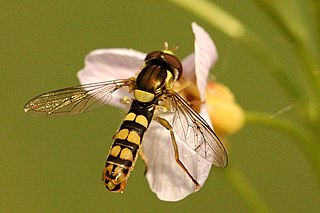
Sphaerophoria interrupta is a Palearctic species of hoverfly.
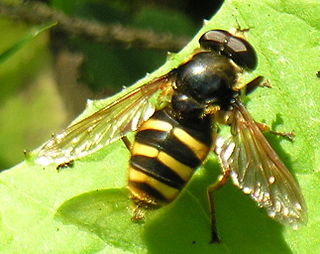
Sericomyia silentis, is a species of hoverfly. It is widespread throughout the Palearctic but normally encountered in small numbers in mountain regions and moorland and bog locations.

Sericomyia lappona, is a species of hoverfly. It is widespread throughout the Palearctic.
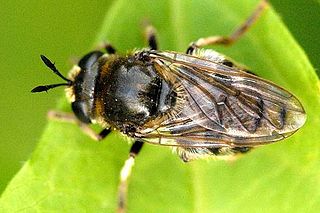
Microdon analis, is a species of hoverfly. It is found in the Palearctic. The distinctive almost slug-like larvae live in ants nests. The larvae are hemispherical in shape and heavily armoured. They are believed to prey on the eggs and larvae of a number of different ant species, notably Lasius niger and the Formica rufa group. These ants are usually found on heathland. However Schmid (2004) claims that Microdon analis and M. major which are cryptic species have been confused under the name analis. M.major is apparently associated with ants of the genus Formica, the other species, M.analis, with Lasius species.

Platycheirus angustatus is a species of hoverfly. It is found in many parts of the Palearctic, and in the Nearctic.
Melangyna arctica is a Holarctic species of hoverfly.

Meligramma guttatum is a Holarctic species of hoverfly.

Dasysyrphus pinastri is a species of hoverfly found in Europe.

Epistrophe nitidicollis is a European and North American species of hoverfly.
Neoascia geniculata is a Palearctic species of hoverfly.



















